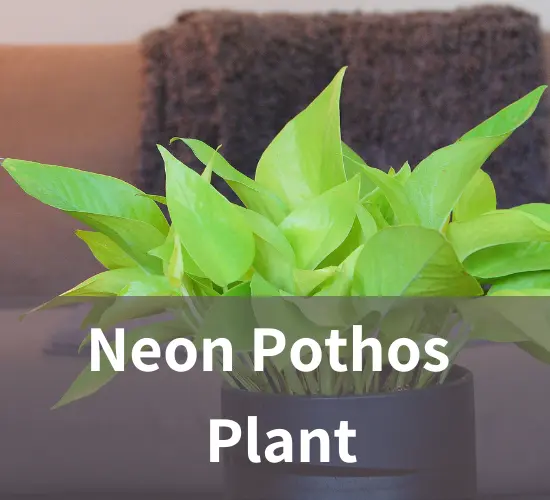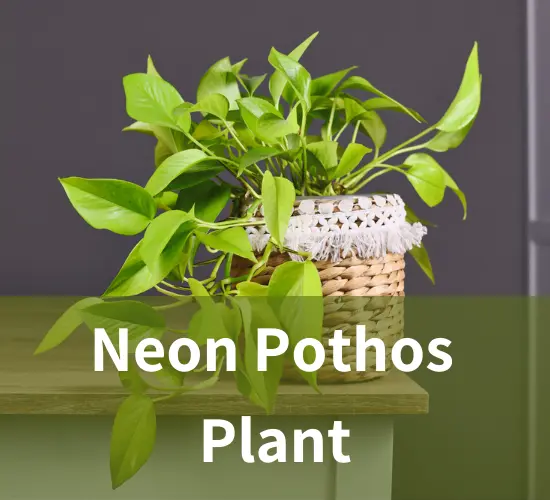Table of Contents
Neon Pothos Light Requirements
Indoor plants have become increasingly popular as they bring a touch of greenery and life to any space. Among the various plant options available, the Pothos is a favorite choice for plant enthusiasts. With its versatile nature and different varieties, mastering the care for Pothos plants is essential for their thriving growth in indoor spaces.
Caring for Pothos plants(Epipremnum Aureum) requires understanding the specific needs of each variety. From temperature and light requirements to watering and fertilizing techniques, this article aims to provide practical and informative tips to help readers successfully care for their Pothos plants.
The different varieties of Pothos, such as the Neon Pothos, Pearls and Jade Pothos, Pearls N Joy Pothos, and Silver Satin Pothos, each have their own unique characteristics and care requirements. By mastering the care techniques for these varieties, readers will be able to create an optimal environment for their Pothos plants to thrive.
Whether you are a beginner or an experienced plant enthusiast, this article will provide you with the necessary knowledge to ensure the health and vitality of your indoor Pothos plants. So, let us embark on this journey of mastering Potho’s care and discover the secrets to cultivating flourishing indoor plants.
How to Care

To ensure optimal growth and health of pothos plants, it is essential to adhere to specific care guidelines. Temperature maintenance is crucial, with the ideal range for pothos plants being between 65-85°F during the day. This ensures that the plants are not exposed to extreme temperatures that can hinder their growth.
Additionally, regular fertilization is important to provide the necessary nutrients for the plants. Monthly fertilization with indoor plant fertilizer, diluted houseplant fertilizer, or all-purpose fertilizer, depending on the specific type of pothos, will help promote healthy growth.
Pruning techniques are also necessary for maintaining pothos plants. Regular trimming encourages the development of side shoots, which leads to a fuller and more bushy appearance. It also helps reduce the demand on the root system, allowing the plant to allocate resources more efficiently. When pruning, it is important to remove dead, discolored, or damaged leaves and stems to maintain the overall health and aesthetic appeal of the plant.
In addition to care techniques, it is crucial to be aware of the potential toxicity of pothos plants. They are mildly toxic to both pets and humans if ingested. It is important to keep them out of reach of children and pets and to seek immediate medical attention if ingestion occurs. By following these care guidelines and being mindful of their toxicity, pothos plants can thrive indoors and provide a beautiful addition to any space.
Troubleshooting common issues
Troubleshooting common issues with pothos plants may include addressing yellowing leaves, which can be a sign of overwatering or underwatering. Adjusting the watering schedule accordingly can help alleviate this issue. Additionally, if the leaves are becoming pale or losing variegation, it may indicate insufficient light. Moving the plant to a brighter location or providing supplemental light can help restore the vibrant colors of the leaves. Finally, if the plant is not growing as vigorously as desired, it may benefit from a change in fertilization routine or the addition of organic matter to the soil to improve nutrient availability.
By troubleshooting these common issues, pothos plant owners can ensure their plants remain healthy and thriving.
The appropriate temperature range for Neon Pothos is 65-85°F during the day. This temperature range provides the optimal conditions for the growth and health of the plant. It is important to keep the temperature consistent within this range to avoid any stress or damage to the plant.
If the temperature drops below 65°F, the growth of the Neon Pothos may slow down, and if it exceeds 85°F, it may lead to wilting and leaf damage. Therefore, it is crucial to place the plant in a location where it can thrive within this temperature range.
When it comes to pruning techniques for Neon Pothos, regular trimming is essential to encourage side shoots and reduce the demand on the root system. This helps create a fuller and more bushy appearance. To prune the plant, simply trim the stems just above a leaf node, which is the point where a leaf is attached to the stem. This will promote new growth from that point. Additionally, removing any dead or discolored leaves will not only improve the plant’s aesthetics but also prevent the spread of diseases or pests.
Speaking of pests and diseases, Neon Pothos is relatively resistant to common pests. However, it can still be susceptible to mealybugs, spider mites, and aphids. Regularly inspecting the plant for any signs of infestation, such as webbing, small insects, or sticky residue, is crucial. If any pests are detected, they can be removed by wiping the leaves with a damp cloth or using an insecticidal soap.
As for diseases, overwatering can lead to root rot, so it is important to let the soil dry out between waterings and ensure proper drainage. Additionally, avoiding excessive humidity and providing adequate air circulation can help prevent fungal diseases.

By following these pruning techniques and keeping an eye out for pests and diseases, your Neon Pothos can thrive and remain healthy.
One important aspect to consider when caring for Neon Pothos is maintaining the appropriate temperature range, as it directly affects the plant’s growth and overall health. Neon Pothos thrives in temperatures ranging from 65°F to 85°F during the day. It is important to avoid exposing the plant to extreme temperatures, as it can lead to stunted growth or even death. To ensure the optimal temperature range, it is recommended to place the plant in a location where it is protected from drafts and direct sunlight.
In addition to temperature, another key aspect of Pothos care is learning how to propagate the plant and choosing the best containers for its growth. Propagating Pothos is a simple and rewarding process that allows you to create new plants from cuttings. To propagate Pothos, you can take stem cuttings with at least two nodes and place them in water or directly in moist soil. Within a few weeks, roots will begin to develop, and you can transplant the new plant into a container. When choosing containers for Potho’s growth, it is important to consider the size and drainage capabilities. Pothos plants prefer containers that are slightly larger than their root system, allowing room for growth. Additionally, it is crucial to choose containers with drainage holes to prevent waterlogging, which can lead to root rot. By following these propagation and container selection tips, you can ensure the successful growth and development of your Pothos plants.
Frequently Asked Questions
Are pothos plants safe for pets and children?
Caution is necessary with pothos plants as they are mildly toxic to pets and humans if ingested. To ensure safety, keep them out of reach and consider safe alternatives like spider plants or Boston ferns for households with pets and children.
Can pothos plants be grown outdoors?
Pothos plants can be grown outdoors in various climates. Outdoor growth provides benefits such as natural sunlight, larger growth potential, and improved air circulation. However, indoor growth offers controlled conditions and protection from extreme weather.
How often should I repot my pothos plant?
The frequency of repotting a pothos plant depends on its growth rate and signs of being pot-bound, such as roots emerging from drainage holes. Repot every 1-2 years to ensure adequate root space and promote healthy growth.
Can I propagate my pothos plant in water?
Propagating pothos in the soil is a common method, but propagating in water offers several benefits. Water propagation allows for easier monitoring of root development and provides a visually appealing process, making it engaging for those seeking freedom in their gardening endeavors.
Can pothos plants tolerate low light conditions?
Pothos plants have moderate lighting requirements and can tolerate low-light conditions. However, signs of low light stress include leggy growth, smaller leaves, and a lack of variegation. Providing adequate indirect bright light will promote healthier growth.
1 thought on “Glowing Greenery: Nurturing Neon Pothos Light Requirements”